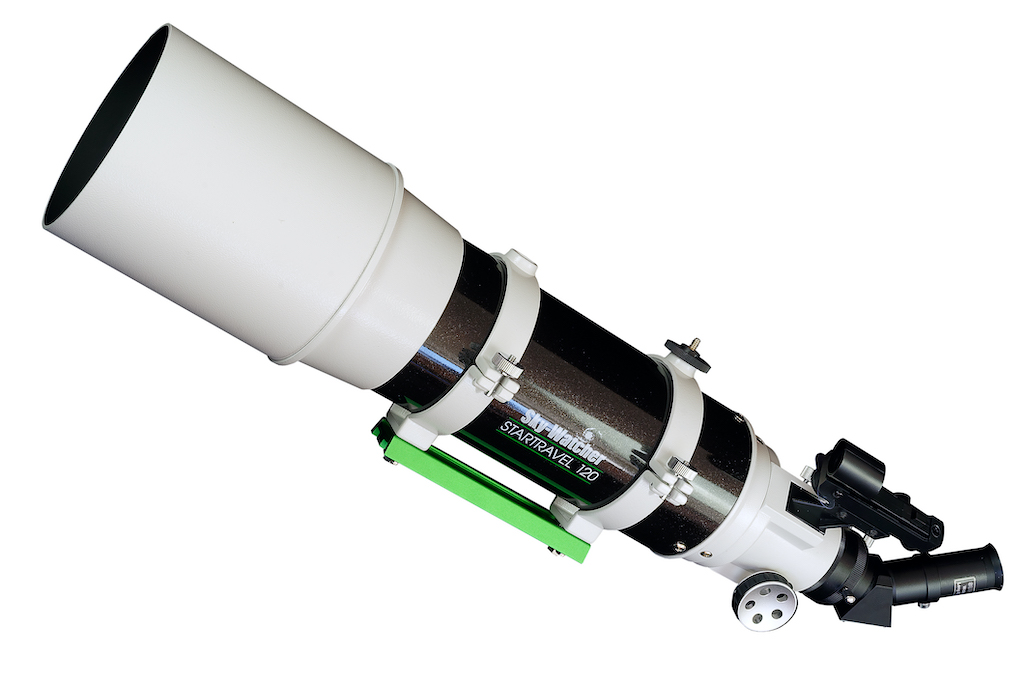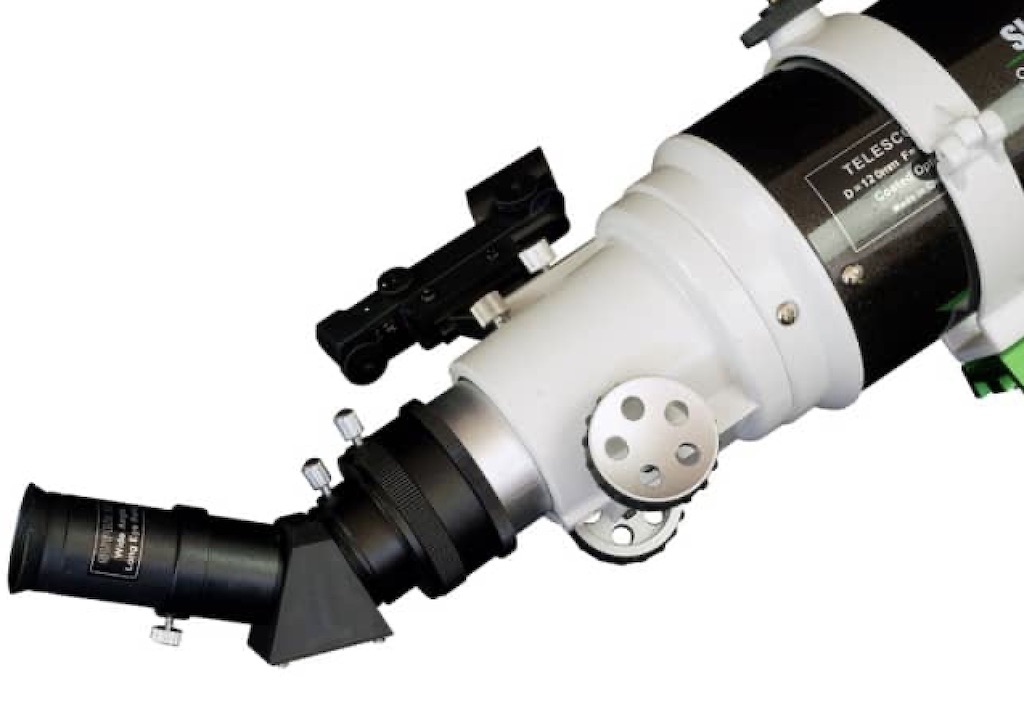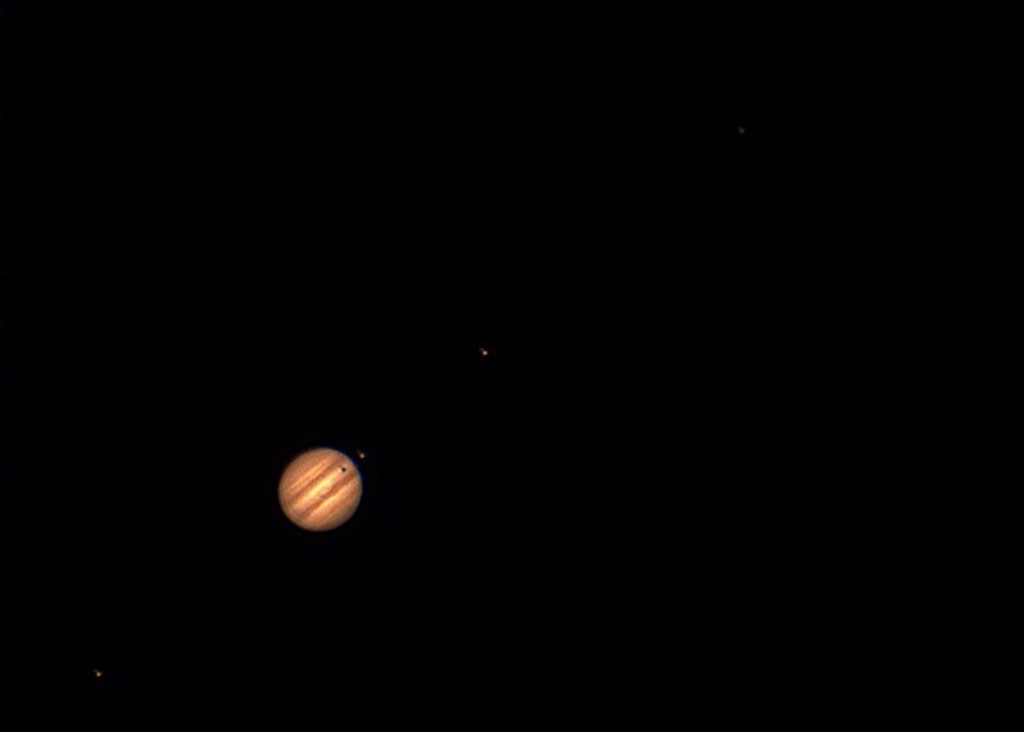Digital Camera World Verdict
Are you looking for an old-fashioned manual telescope that you can use to star hop your way around the night sky, but which can be turned into an astrophotography-ready ‘scope with the addition of a few optional extras? The Sky-Watcher Startravel 120 with an EQ3-2 mount fits the bill, with the addition that it is a great grab-and-go telescope that oozes potential, with a bit of work.
Pros
- +
Good value for money
- +
Adaptable – can be used for visual observing or imaging
- +
Better-than-average accessories
Cons
- -
Optional extras needed to make it astrophotography-ready
- -
Flimsy tripod
- -
Some chromatic aberration
Why you can trust Digital Camera World
The Sky-Watcher Startravel 120 with an EQ3-2 equatorial mount is a very good option for those on a limited budget – especially those searching for an all-inclusive package that's both easy to set up and use.
Combined with a decent-sized 120mm aperture, skywatchers are treated to very good quality eyepieces, Barlow lens, a fair-quality tripod, accessory tray and adapter for those looking to attach a DSLR camera. The mount also features a handy shutter-release port that makes control of your imager a very simple process.
The Startravel 120 is a portable all-rounder, allowing for very good views of the Moon, planets and bright deep-sky targets such as the Orion Nebula (Messier 42) and Andromeda Galaxy (Messier 31). In our opinion, adding extra accessories to this refractor will optimize your astroimaging experience a touch more over its current capabilities.

Sky-Watcher Startravel 120 EQ3-2: Specifications
Optical design: Refractor
Aperture: 120mm
Focal length: 600mm
Focal ratio: f/5
Optical tube length: 660mm
Optical tube weight: 4.1kg
Mount weight capacity: 5kg
Total kit weight: 5.7kg
Includes: 10mm and 25mm eyepieces, 2x Barlow lens, red-dot finder, star diagonal
Sky-Watcher Startravel 120 EQ3-2: Design & key specs
When you come to buy a telescope, there will be many questions that you’ll want to think over. Do you want to view the Moon and planets, or do you want to hunt down so-called ‘faint fuzzies’ - deep-sky objects such as nebulae and galaxies? Are you interested in a permanent set up at home, or do you want a grab-and-go ‘scope to take with you on your travels? Are you a visual observer, or is astrophotography important to you?
With all these questions in mind, if you are not sure of the answers, or want to have options, then adaptability is often an important factor in a telescope and mount set-up. This is an important point if you want to get the best out of Sky-Watcher’s StarTravel 120 on an EQ3-2 mount. That’s because as sold, it is ostensibly a visual instrument, but it has the facility for add-ons that turn it into a reasonable astrophotography telescope.
The EQ3-2 equatorial mount is sturdy enough, but on its own it is limited to manual control. However, add a single right ascension axis or dual axis motors, which are available as optional extras, and you’re suddenly able to track targets. There’s an included adapter for attaching a DSLR camera, and a camera shutter release port so that you can take images without having to touch your imager and incur vibrations. And while it doesn’t come with a polar-alignment scope, there is a built-in holder for you to add your own.

The StarTravel-120 is certainly an attractive telescope, with its black tube, white tube rings and dew shield, combined with white Sky-Watcher branding. The supplied 10mm and 25mm eyepieces are better than the normal eyepieces thrown into such telescope packages as freebies, and the 2x Barlow, which doubles the magnification of whichever eyepiece you are using, is of good quality. Speaking of magnifications, on their own the eyepieces provide 24x and 60x magnification, but with the Barlow lens added, they double to 48x and 120x.
The EQ3-2 mount is a good performer, solid and easy to set-up, with a maximum weight capacity of 5kg. Given that the StarTravel-120 weighs 4.1kg, that leaves you with about a kilogram to play with – that should just about let you add one of the lighter models of DSLR camera and a polar scope to your set up. The aluminium tripod, alas, is a little flimsy, though vibrations are measured to reside after just a couple of seconds.
Sky-Watcher Startravel 120 EQ3-2: Performance

Refractors are subject to chromatic aberration – the color fringing seen around bright objects as different colors (or wavelengths) are brought to focus by the telescope’s lens optics at slightly different focal points. Unfortunately, the Startravel 120 is of no exception, but we are pleased to find that our observations and images aren't too impacted.
The very best refractors seek to minimise or eradicate chromatic aberration by using double or triple lenses treated with various coatings and glass mixtures. The StarTravel features an air-spaced achromatic doublet in its effort to minimize chromatic aberration, and it does this reasonably well.
The color fringing is still present, but isn’t intrusive, at least not visually. Experienced astrophotographers will likely find it too much, but those more inexperienced and less likely to want the "perfect" image might find the levels of chromatic aberration acceptable for their needs and budget. Regardless, the right image processing software is a great solution for erasing this optical imperfection.
The Startravel 120 is a fast telescope, with a focal ratio of f/5, making it ideal for deep-sky observing and imaging by producing brighter images.
The images are pretty pin-sharp, with single and double stars all showing as tidy points, craters on the Moon looking crisp and contrasty, and star fields are sharp to about least three-quarters of the way across the field of view. The Barlow lens was really put to the test, as chromatic aberration is kept to a minimum even with the enhancement of double magnification.
Sky-Watcher Startravel 120 EQ3-2: Verdict
The StarTravel-120 is a very good telescope for visual observation given its price-point, but you’ll need to spend extra to bring it up to spec for astrophotography – dual-axis motor drives and a polar-alignment scope are essential, but at least there is, fortunately, built-in provision to add these extras. You might also want to invest in a sturdier tripod.
That said, the EQ3-2 mount is a good mount for smaller telescopes, and the StarTravel-120 provides good views and reasonably limited chromatic aberration, so you shouldn’t feel short-changed when looking through the better-than-average eyepieces or when imaging. Can you get a better telescope set-up, especially for imaging? Yes, of course, but there won’t be that many available at this price.
Read more:
The best lenses for astrophotography
The best camera equipment for astrophotography
The best telescopes for astrophotography
Gemma is content director of science and space magazines How It Works and All About Space, history magazines All About History and History of War as well as Science, Technology, Engineering, Arts and Mathematics (STEAM) kids education brand Future Genius. She is the author of several books including "Quantum Physics in Minutes", "Haynes Owners’ Workshop Manual to the Large Hadron Collider" and "Haynes Owners’ Workshop Manual to the Milky Way". She holds a degree in physical sciences, a Master’s in astrophysics and a PhD in computational astrophysics. She was elected as a fellow of the Royal Astronomical Society in 2011. Previously, she worked for Nature's journal, Scientific Reports, and created scientific industry reports for the Institute of Physics and the British Antarctic Survey. She has covered stories and features for publications such as Physics World, Astronomy Now and Astrobiology Magazine.


